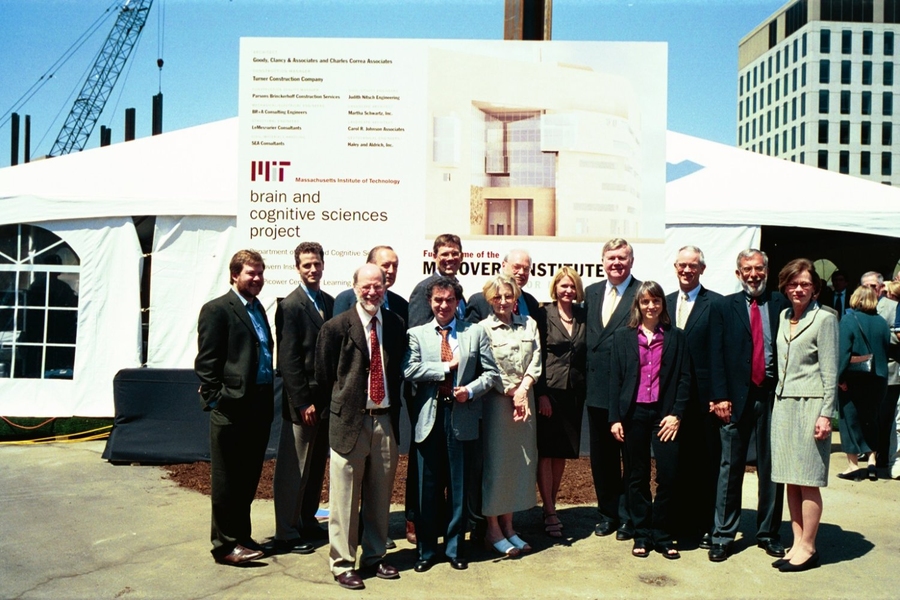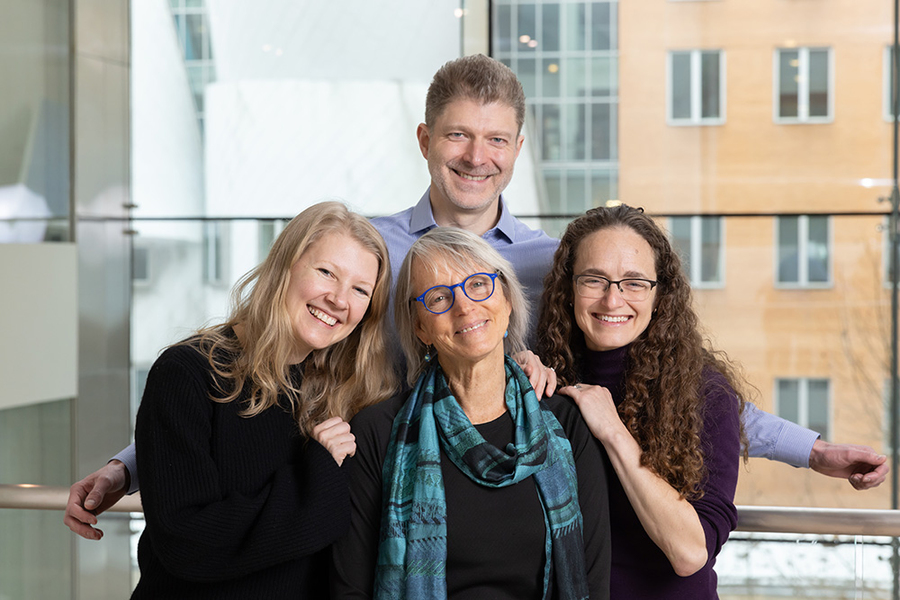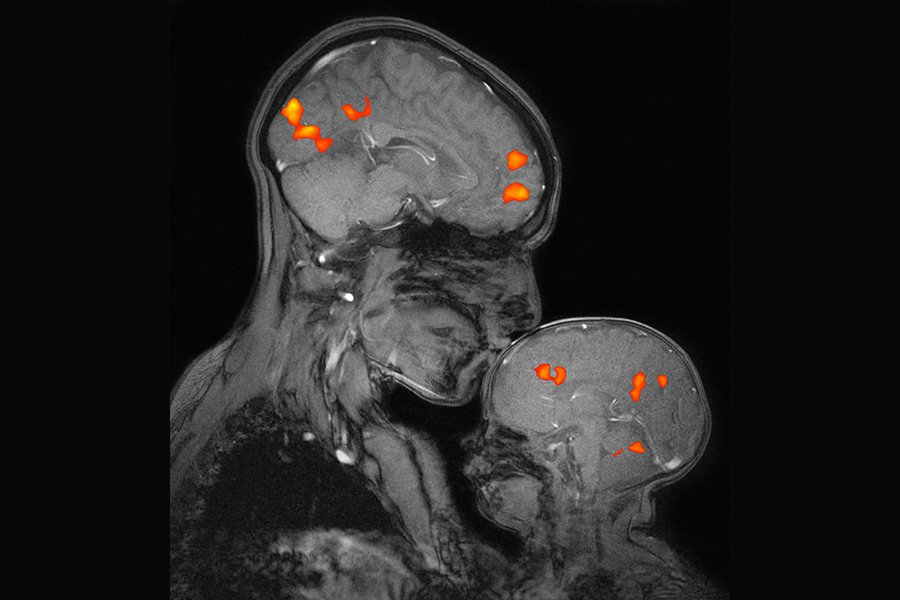In 2000, Patrick J. McGovern ’59 and Lore Harp McGovern created an extraordinary gift to create the McGovern Institute for Brain Research on MIT, powered by their deep curiosity to the human mind and their belief in the power of science to change their lives. Their promise of $ 350 million began with a simple but bold vision: to understand the human brain in its entire complexity and use this understanding to improve humanity.
Twenty -five years later, the McGovern Institute is a testimony of interdisciplinary cooperation, to continue to shape our understanding of the brain and improve the quality of life for people around the world.
 Play the video
Play the video
McGovern in 25
Video: McGovern Institute
At the beginning
“In any case, this is a truly historical moment for MIT,” said MIT MIT Charles M. Vest during his introductory comment on the 2000 event to celebrate McGovern Gift Agreement. “The creation of the McGovern Institute will be launched by one of the deepest and most important scientific businesses of this century in what will certainly be the cornerstone of the scientific contributions of MIT of the next decade.”
Vesta tapped the Phillip A. Sharp, Mit Institute Professor Emeritus of Biology and Nobel Laureate to lead the institute, and named six professors Mit-Emilio Bizzi, Martha Constantine-Paton, Ann Graybiel PhD ’71, H. Robert Horvitz ’68, Nancy Kanwisher ’80, and Tomaso-Pergio, and to establish, and to establish, and to establish, and to establish, and to establish. Faculty. The construction began in 2003 to build 46, a research complex with an area of 376,000 square feet on the northeast edge of the campus. The new “gateway from the north” MIT would eventually be accommodated by the McGovern Institute, the Picower Institute for Learning and Memory and Mit’s Department of Brain and Cognitive Sciences.

Patrick J. McGovern ’59 (Fifth Inspecified) and Lore Harp McGovern (on Patrick’s right) gathered with the founding members of the faculty and MIT administration at the breakdown of building 46 in 2003.
Photo: Donna Coveney
Robert Desimone, professor of neuroscience Doris and Don Berkey at Mit, replaced Sharp in 2005 as the director of the McGovern Institute and compiled a significant list of 22 faculty members, including the Nobel Prize, the winner of the breakthrough awards and medals and medal prices and the Academy and Academy Awards.
Fourth century innovation
On April 11, 2025, the McGovern Institute celebrated its 25th anniversary of the half -day symposium with the presentations of the Institute of Mit Robert Langer, a spokesman for graduates from various McGovern laboratories, and Desimone, who is in his 20th Institute.
Desimone emphasized the recent discoveries of the Institute, including the development of the CRISPR Genoma system, which culminated in the first CRISPR gene therapy approved for humans-the-to-to-viee, which is in the new era of transformative medicine. In other milestones, scientists McGovern developed the first prosthetic limb by a fully controlled nervous system of the body; a flexible probe that uses communication between the intestinal brain; The technique of expansion microscopy that prepares the way for biological laboratories around the world to make nanoparticles to display; And advanced computational models that show how we see, hear, use language and even think about what others think. Similarly, transformative was the work of the McGovern Institute in Neuroimaging, revealed the architecture of human thinking, and established brands that signal early mental illnesses before symptoms occur.

The McGovern community gains a number 25 for celebration of the 25th anniversary of the McGovern Institute.
Photo: Steph Stevens
Synergy and open science
“They often ask me what distinguishes us from other neuroscience institutions and programs around the world,” says Desimone. “My answer is simple. In the McGovern institute, the whole is greater than the sum of its parts.”
Many discoveries on the McGovern Institute have depended on cooperation in multiple laboratories, from biological engineering to the depiction of the human brain and artificial intelligence. In modern brain research, significant progress often requires a common expertise in neurophysiology, behavior, computer analysis, neuroanatomy and molecular biology. More than a dozen different ministries of MIT are represented by the faculty and postgraduate students of McGovern, and this synergy has led to knowledge and innovations that are much greater than what any only discipline could achieve alonon.
The McGovern Ethos is also a roast spirit of open science, where new developed technologies with colleagues around the world are shared. For example, through a partnership in the hospital, McGovern researchers test their tools and therapeutic interventions in clinical environments and accelerate their discoveries into the real world.

Professor Nancy Kanwisher (Center) with three of her scientific “children”: (left to right) Professors MIT Evelina Fedorenko, Josh McDermott and Rebecca saxe.
Photo: Steph Stevens
Heritage McGovern
The Hudreds of Scientific Papers has appeared from McGovern’s laboratories over the last 25 years, but most of the faculty would claim to be people – young scientists – who truly define the McGovern Institute. The award -winning faculty often attracts clearly young minds, but many faculties of McGovern also serve as mentors and create another and living scientific community that sets a global standard for brain research and its application. For example, Kanwisher has more than 70 doctoral students and postdoctors who have become leading scientists who have aroused the world. Three of her training pins, Evelina Fedorenko PhD ’07, Josh McDermott PhD ’06 and Rebecca Saxe PhD ’03, John W. Jarve (1978) Professor of brain and cognitive sciences are now at the McGovence Institute. Other McGovern graduates shared the stories of mentoring, science and the impact of the real world on the 25th anniversary symposium.
Looking into the future, the McGovern community is more engaged than ever to reveal the secrets of the brain and make a meaningful difference in the lives of individuals on a global scale.
“Promoting team sciences, open communication and partnership between disciplines,” says Lore Harp McGovern, the co -founder of the Lore Harp McGovern, “our culture states how individual expertise can be intensified by collective efforts.

